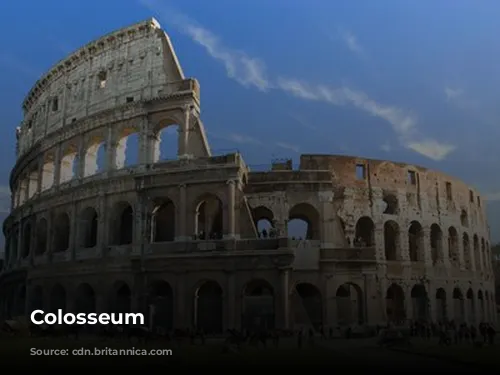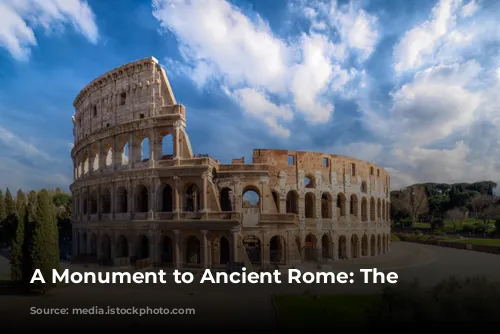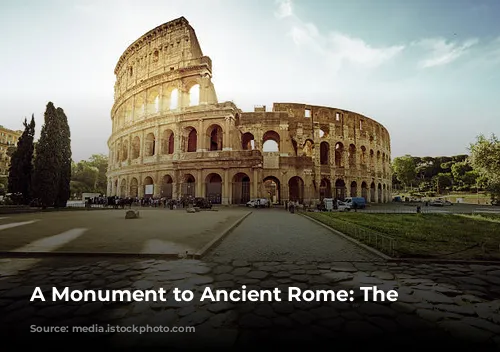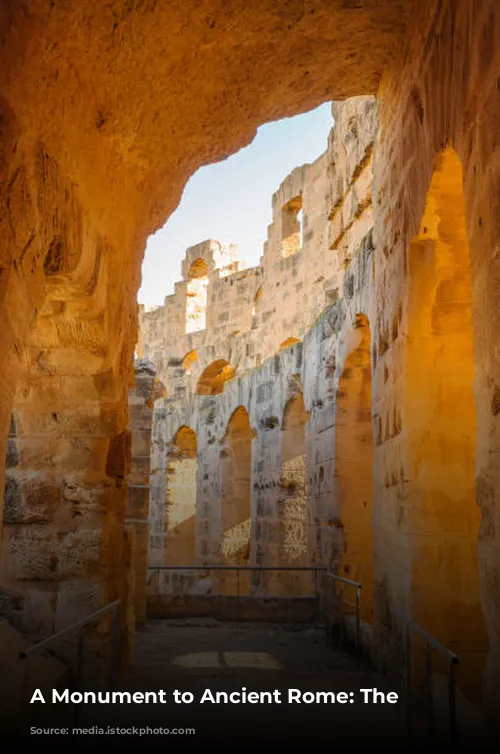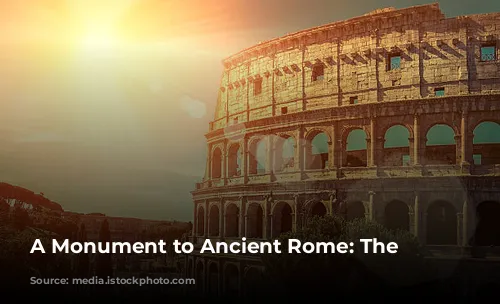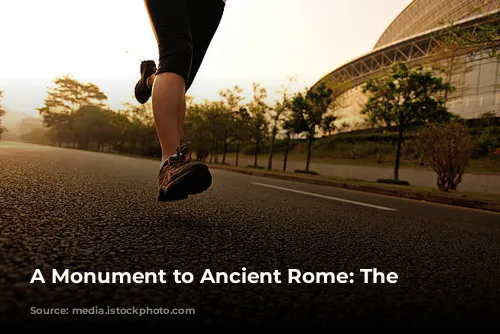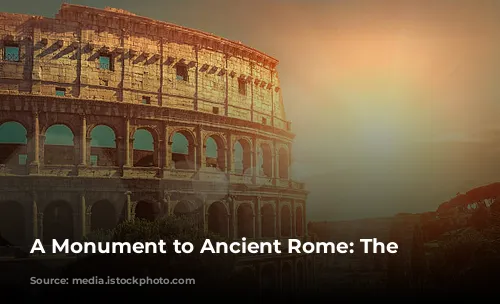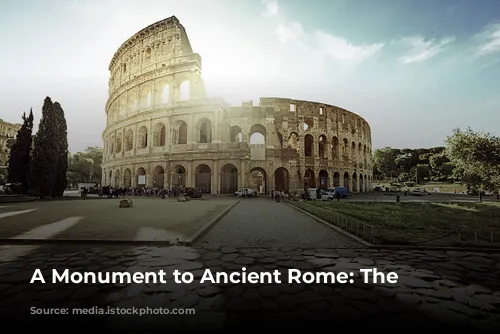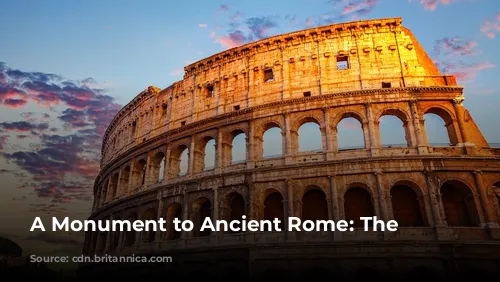The Colosseum, a towering symbol of ancient Rome’s architectural brilliance and engineering prowess, stands today as one of the few mostly intact structures from that glorious era. Its enduring presence draws millions of tourists each year, contributing significantly to Italy’s economy. In fact, in 2018, the Colosseum, along with the Roman Forum and Palatine Hill, generated over $63.3 million (€53.8 million) in revenue, making it the most lucrative tourist attraction in the entire country.
This iconic monument has witnessed the rise and fall of empires, its story interwoven with the tapestry of Roman history. After the decline of the Western Roman Empire, the Colosseum fell into a state of disrepair. In the 12th century, it was repurposed as a fortress by the Frangipane and Annibaldi families, marking a shift from grand entertainment to a stronghold of power. The 15th century saw the Colosseum further transformed, this time into a quarry, as Pope Alexander VI granted permission for its stone to be used in other constructions. Over a thousand years of neglect took their toll, yet the Colosseum’s grandeur remained, inspiring a wave of state-funded restoration efforts that began in the 1990s, ensuring its survival for generations to come.
From Arena to Fortress
The Colosseum was conceived as a beacon of revival, a testament to Rome’s resilience in the aftermath of a turbulent period known as the “Year of the Four Emperors” in 69 CE. Like other amphitheatres, the emperor Vespasian envisioned the Colosseum as a hub of entertainment, a place for gladiatorial combat, thrilling animal hunts, and even awe-inspiring mock naval battles.
Construction commenced under Emperor Vespasian between 70 and 72 CE, with the completed structure dedicated in 80 CE by his son and successor, Titus. A final flourish was added in 82 CE by Emperor Domitian, who oversaw the construction of the Colosseum’s fourth story. The funding for this grand endeavor came from the spoils of war, specifically from Titus’s conquest of Jerusalem in 70 CE. Sadly, the construction also involved enslaved Jews from Judaea, a poignant reminder of the empire’s complex history.
A Legacy of Stone and Spectacle
The Colosseum, also known as the Flavian Amphitheatre, is an elliptical masterpiece built with a combination of stone, concrete, and tuff. Its imposing structure rises four stories high, reaching a maximum height of 156 meters (513 feet). This massive structure, measuring 189 by 156 meters (620 by 513 feet), could accommodate up to 50,000 spectators, making it a truly grand spectacle.
The Colosseum’s location was carefully chosen, just east of the Palatine Hill, on the grounds of Nero’s infamous Golden House. The artificial lake that once graced this opulent palace complex was drained, and the Colosseum took its place, a deliberate and symbolic act that reflected a shift in power. Vespasian, a humble man who ascended to the throne through a tumultuous path, chose to replace the tyrannical emperor’s private retreat with a public arena that could unite the masses.

A Timeless Symbol of Ancient Rome
The Colosseum’s official dedication in 80 CE was a grand affair, marked by a 100-day celebration of games. In 82 CE, Domitian completed the structure by adding the uppermost story. Unlike earlier amphitheatres, which were often built into hillsides for stability, the Colosseum stood tall and proud, an independent structure of stone and concrete. Its construction was a testament to Roman ingenuity, showcasing a complex system of barrel and groin vaults. The exterior was adorned with three stories of arcades, framed by engaged columns in the Doric, Ionic, and Corinthian orders, a design that later inspired Renaissance architects.
The Colosseum’s grand scale was matched by its functionality. Its massive retractable awning, known as a velarium, protected spectators from the relentless Roman sun. This elaborate system relied on hundreds of Roman sailors to manipulate the rigging and extend or retract the awning. The Colosseum served as a stage for countless spectacles, from gladiatorial combat to animal hunts and even mock naval battles, a testament to the Roman obsession with entertainment.
From Glory to Neglect and Renewal
The Colosseum’s grandeur eventually faded, replaced by the dust of time. In medieval times, it was repurposed as a church, then as a fortress, bearing witness to the changing tides of power. The Colosseum suffered damage from lightning strikes, earthquakes, and vandalism, its once-splendid marble seats and decorative elements slowly disappearing, leaving only a shadow of its former glory.
The Colosseum was virtually abandoned, its once-sacred stones used as a quarry for over a thousand years. But the spirit of ancient Rome endured. In the 19th century, efforts to preserve the Colosseum began in earnest, led by Pope Pius VIII. Finally, in the 1990s, a comprehensive restoration project breathed new life into this timeless landmark, ensuring its survival for future generations.
The Colosseum continues to captivate the world, standing as a powerful reminder of Rome’s ancient grandeur. Its story is a testament to the city’s resilience, its ability to rise from the ashes, and its enduring appeal to the human spirit. Millions of tourists flock to its foot each year, drawn to its majestic presence and the echoes of a glorious past. The Colosseum stands as a timeless symbol of ancient Rome, an architectural marvel that continues to inspire awe and wonder in hearts and minds across the globe.

